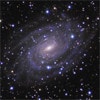From Apollo 11 to Artemis: This time when we go back to the moon, we are going to stay

Nothing has unleashed the imagination of the world more nor united humanity better than watching Commander Neil Armstrong take that first step onto the previously untouched lunar surface.
Today, on the golden anniversary of the Apollo 11 moon landing, NASA looks back with heartfelt gratitude for the Apollo generation’s trailblazing courage as we — the Artemis generation — prepare to take humanity’s next giant leap to Mars.
Apollo 11: 'The greatest single broadcast in television history'

When the Eagle spacecraft touched down on the moon's surface on 20 July 1969, a television camera mounted on its side captured the first tentative steps and words of astronaut Neil Armstrong and sent them across hundreds of thousands of miles to hundreds of millions of pairs of eyes glued to television sets.
"Nasa did a brilliant job of marketing the Apollo mission, of feeding reporters rather than keeping everything under the hood," says Tracy Dahlby at the University of Texas at Austin's School of Journalism.
First ever black hole image released

It measures 40 billion km across - three million times the size of the Earth - and has been described by scientists as "a monster".
"It has a mass 6.5 billion times that of the Sun. And it is one of the heaviest black holes that we think exists. It is an absolute monster, the heavyweight champion of black holes in the Universe."
The image matches what theoretical physicists and indeed, Hollywood directors, imagined black holes would look like, according to Dr Ziri Younsi, of University College London - who is part of the EHT collaboration.
FCC fines Swarm $900,000 for unauthorized satellite launch

Swarm Technologies Inc will pay a $900,000 fine for launching and operating four small experimental communications satellites that risked “satellite collisions” and threatened “critical commercial and government satellite operations,” the Federal Communications Commission said on Thursday.
FCC Commissioner Mike O’Rielly said the size of the penalty “is probably not significant enough to deter future behavior, but the negative press coverage is likely to prevent this company and others from attempting to do this again.”
Richard Branson Says He’s Going to Send People Into Space by Christmas

In a new interview with CNN, the Virgin Group founder now says he’s “reasonably confident” his spaceflight company can beat out competitors like Blue Origin and SpaceX with crewed trips to space before Christmas.
Hubble telescope hit by mechanical failure

The observatory, described as one of the most important scientific instruments ever created, was placed in "safe mode" over the weekend, while scientists try to fix the problem.
If the "misbehaving" gyroscope turns out not to work, the orbiting observatory may have to operate on one. This would conserve the remaining gyros for as long as possible, but would restrict the telescope somewhat.
The Falcon Heavy is an absurdly low-cost heavy lift rocket

Upon direct comparison, the cost disparities are sobering, proving that commercial development of large rockets likely represents the future of the industry.
The bottom line is that the Falcon Heavy is a more powerful rocket than the Delta IV Heavy, and by various measures the latter will probably soon cost the US government about five times as much. Put another way, the Department of Defense may have to pay half a billion dollars more for a single launch of certain military satellites on the Delta IV Heavy versus the Falcon Heavy.
Voyager 1 Fires Up Thrusters After 37 Years

If you tried to start a car that's been sitting in a garage for decades, you might not expect the engine to respond. But a set of thrusters aboard the Voyager 1 spacecraft successfully fired up Wednesday after 37 years without use.
The thruster test went so well, the team will likely do a similar test on the TCM thrusters for Voyager 2, the twin spacecraft of Voyager 1. The attitude control thrusters currently used for Voyager 2 are not yet as degraded as Voyager 1's, however.
See 2.8 million stars shine in one stunning image

Gaia is on a mission to build a 3D map of the Milky Way. The ESA calls it a "billion-star surveyor." The image sequence shows just one small corner of our galaxy, but it's an area densely stuffed with stars.
There are around 100 thousand million stars in the Milky Way, according to the ESA, so looking at just 2.8 million of them shows us just a small fraction of our home galaxy.
Chinese rocket launch fails after liftoff

The second launch of China's new-generation Long March-5 carrier rocket failed Sunday -- dealing a blow to the country's ambitious space aspirations.
Dubbed "Chubby 5" for its huge size -- 5 meters in diameter and 57 meters tall -- the LM-5 rocket is designed to carry up to 25 tons of payload into low orbit, more than doubling the country's previous lift capability.